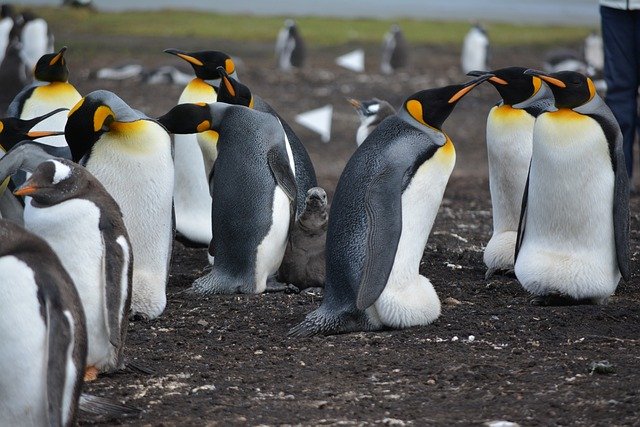**Topic: "The Social Structure of Penguin Colonies: Insights into Their Complex Communities"** In

The Social Structure of Penguin Colonies: Insights into Their Complex Communities
Penguins are often celebrated for their adorable waddles and striking tuxedo-like appearances, but beneath their charming exterior lies a fascinating social structure that is vital for their survival. These flightless birds, primarily found in the Southern Hemisphere, particularly in Antarctica, exhibit complex social behaviors that enhance their ability to thrive in harsh environments. In this post, we will explore the intricate social dynamics of penguin colonies, shedding light on their communal living, breeding practices, and social interactions.
The Importance of Colony Life
Penguins are highly social animals that live in large colonies, sometimes numbering in the thousands. The benefits of such communal living are manifold:
- Protection from Predators: By forming large groups, penguins can reduce the risk of predation. The sheer number of individuals makes it difficult for predators to target a single bird.
- Thermoregulation: In frigid temperatures, huddling together helps penguins conserve heat. This behavior is particularly evident in species like the Emperor Penguin, where individuals can maintain body warmth by clustering together during harsh winter months.
- Resource Sharing: Living in colonies allows for the sharing of information regarding food sources, which is critical in the vast and often barren landscapes of the Antarctic.
Hierarchical Structures and Roles
Within penguin colonies, social hierarchies and roles are often established, although these can vary by species:
- Breeding Pairs: Many penguins form monogamous pairs for the breeding season. These pairs often return to the same nesting sites year after year, strengthening their bond and ensuring the survival of their offspring.
- Chick Rearing: In species like the Gentoo and Adélie penguins, both parents share the responsibility of incubating eggs and feeding chicks. This cooperative breeding strategy enhances the survival rate of young penguins.
- Dominance Hierarchies: Some species exhibit dominance hierarchies, where more dominant individuals have preferential access to resources such as food and nesting sites. These hierarchies can lead to aggressive displays and competition, particularly during the breeding season.
Communication and Social Interactions
Penguins have developed a range of vocalizations and physical displays to communicate with one another, which are crucial for maintaining social bonds and coordinating group activities:
- Vocal Calls: Each species of penguin has its own distinct calls, and individual penguins can recognize the calls of their mates and chicks amidst the cacophony of a bustling colony. This ability is essential for locating family members in crowded environments.
- Body Language: Penguins also use body language to convey messages. For example, bowing, flapping wings, and head movements can indicate aggression, submission, or courtship.
The Impact of Environmental Changes
As climate change and human activities continue to impact the delicate ecosystems where penguins thrive, understanding their social structures becomes increasingly important. Changes in sea ice patterns, food availability, and habitat loss can disrupt the intricate social networks that penguins rely on for survival. Conservation efforts must consider these social dynamics to ensure the long-term health of penguin populations.
Conclusion
The social structure of penguin colonies is a testament to the adaptability and resilience of these remarkable birds. Their complex communities are not just a survival strategy; they are a rich tapestry of interactions that reflect the importance of social bonds in the animal kingdom. As we continue to study and protect these fascinating creatures, we gain valuable insights into the interconnectedness of life in some of the planet's most extreme environments.
By understanding the social dynamics of penguin colonies, we can better appreciate their role in the ecosystem and the challenges they face in an ever-changing world. Let us continue to advocate for their preservation and the health of their habitats, ensuring that future generations can marvel at these extraordinary birds.
